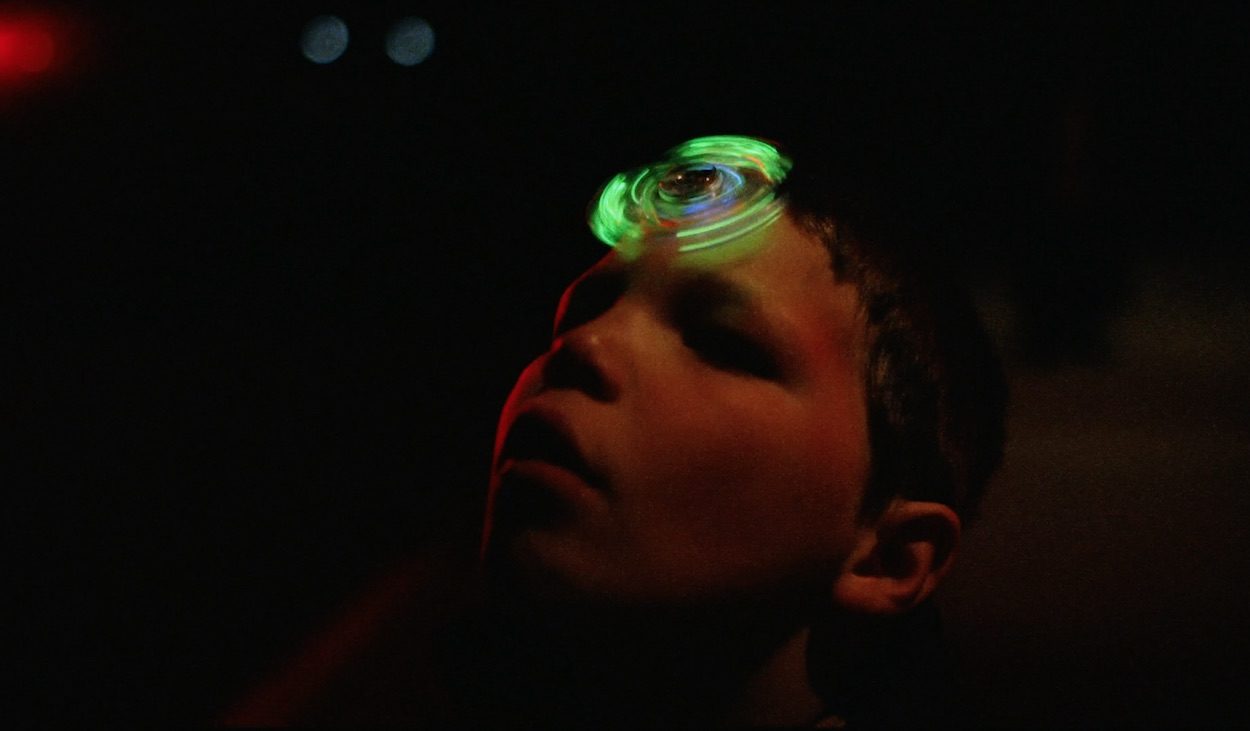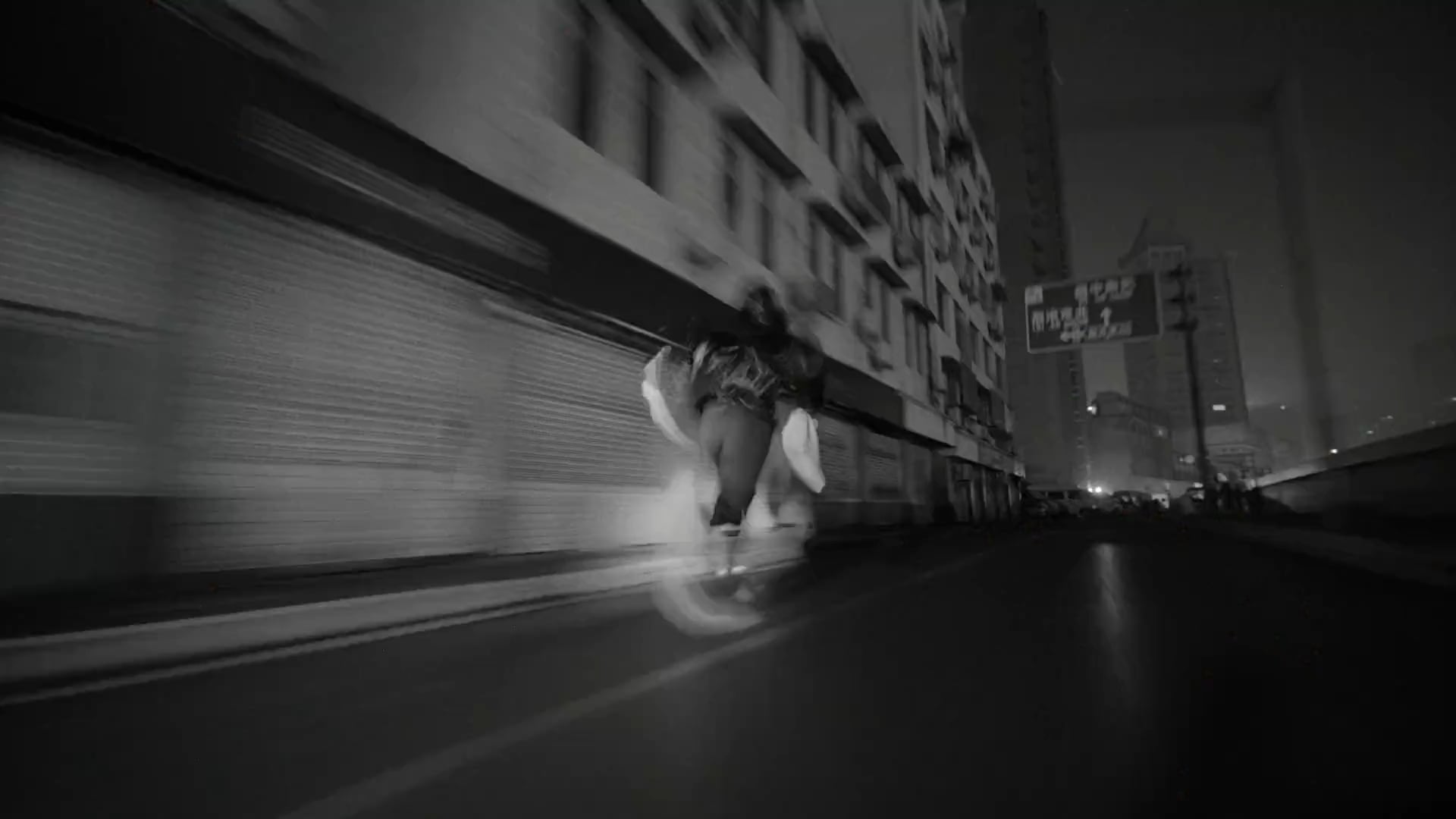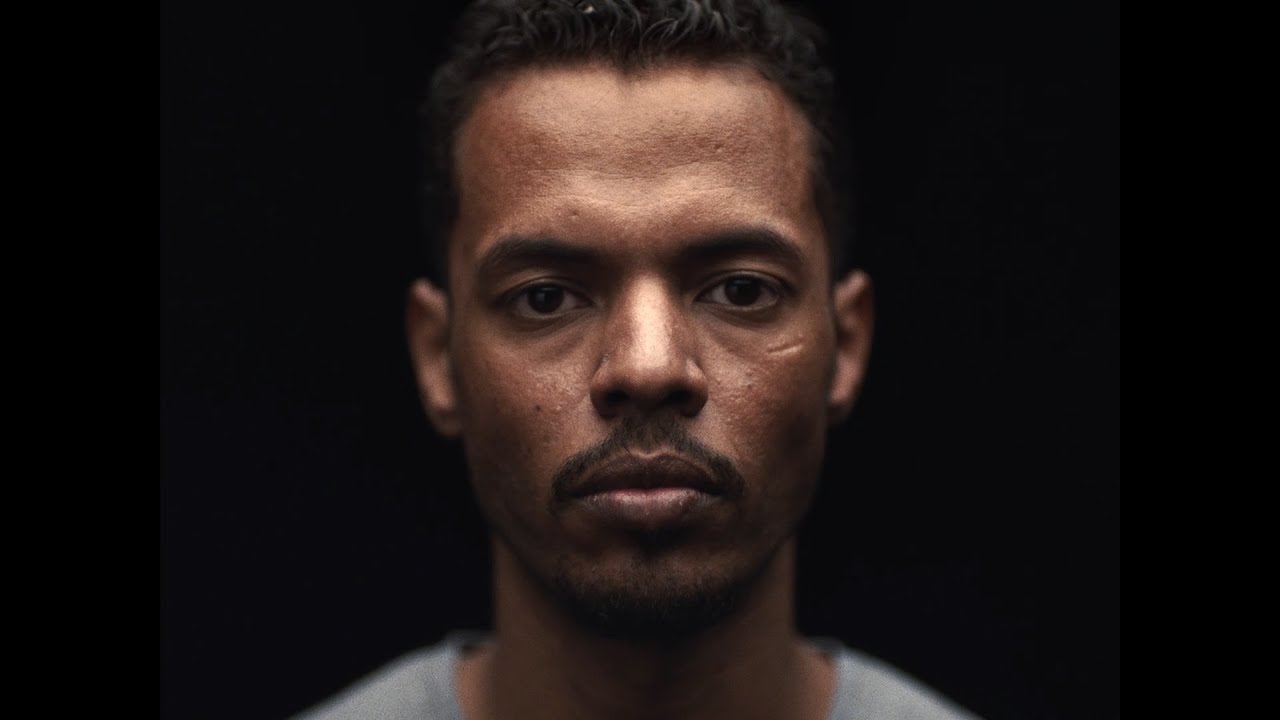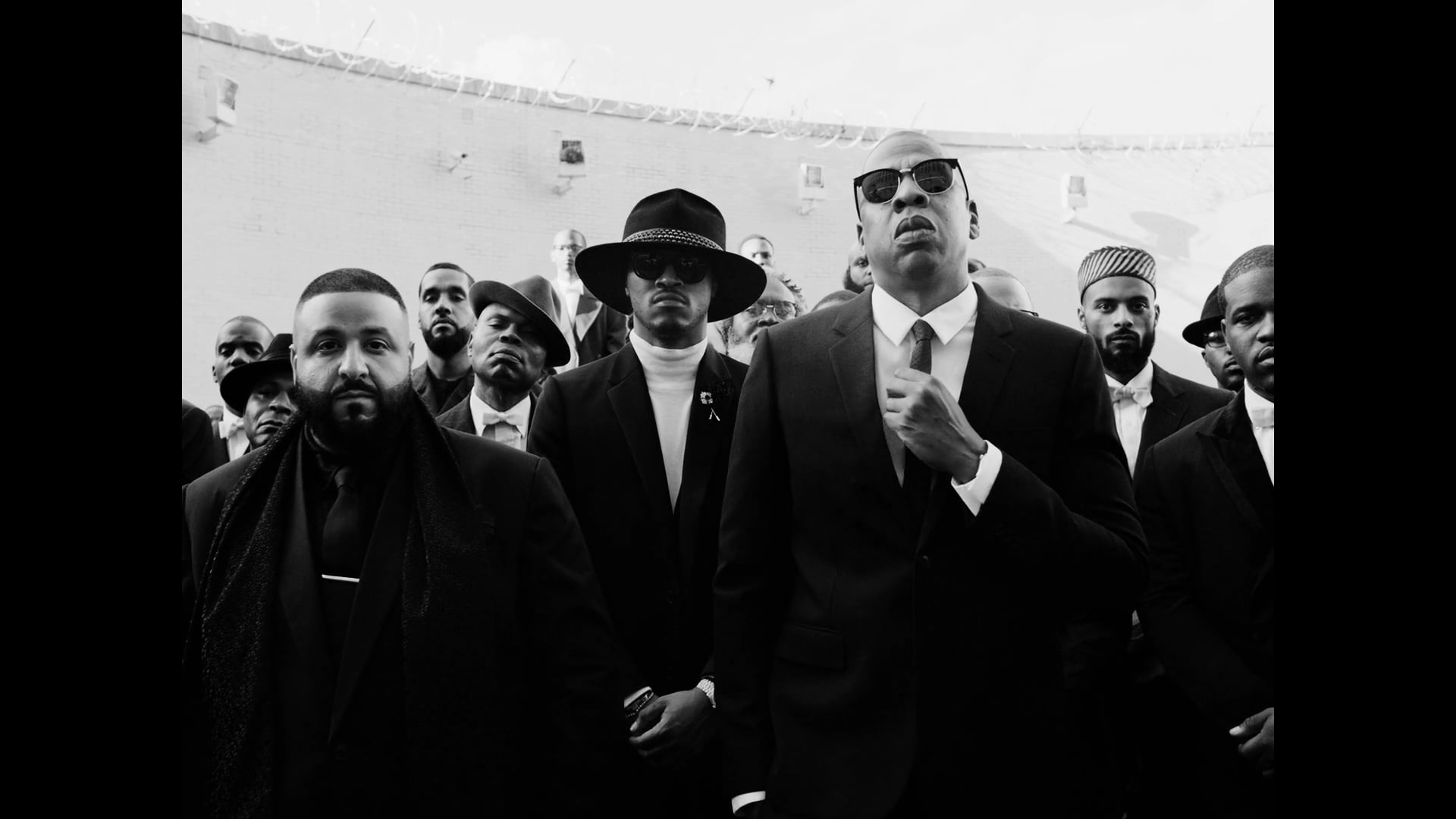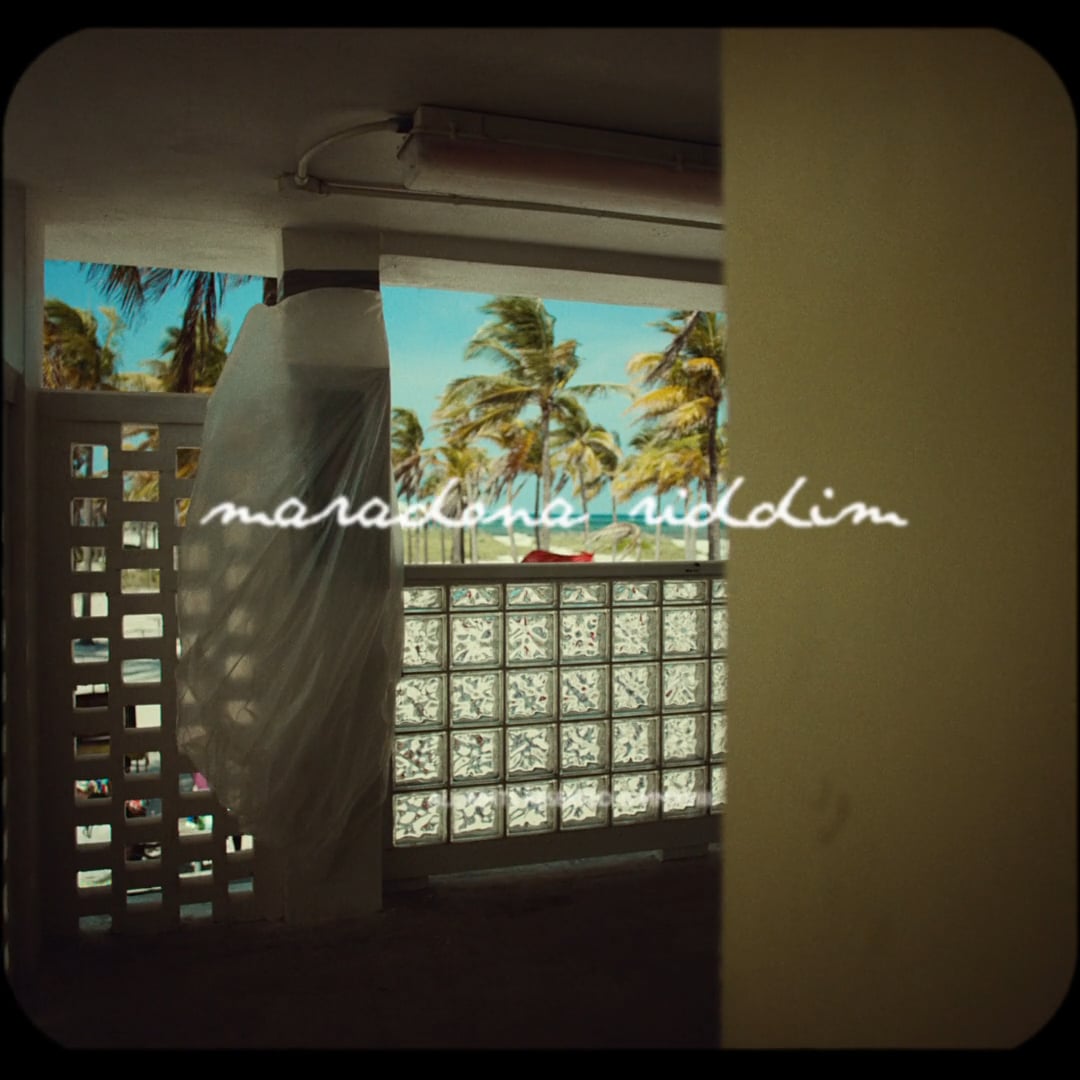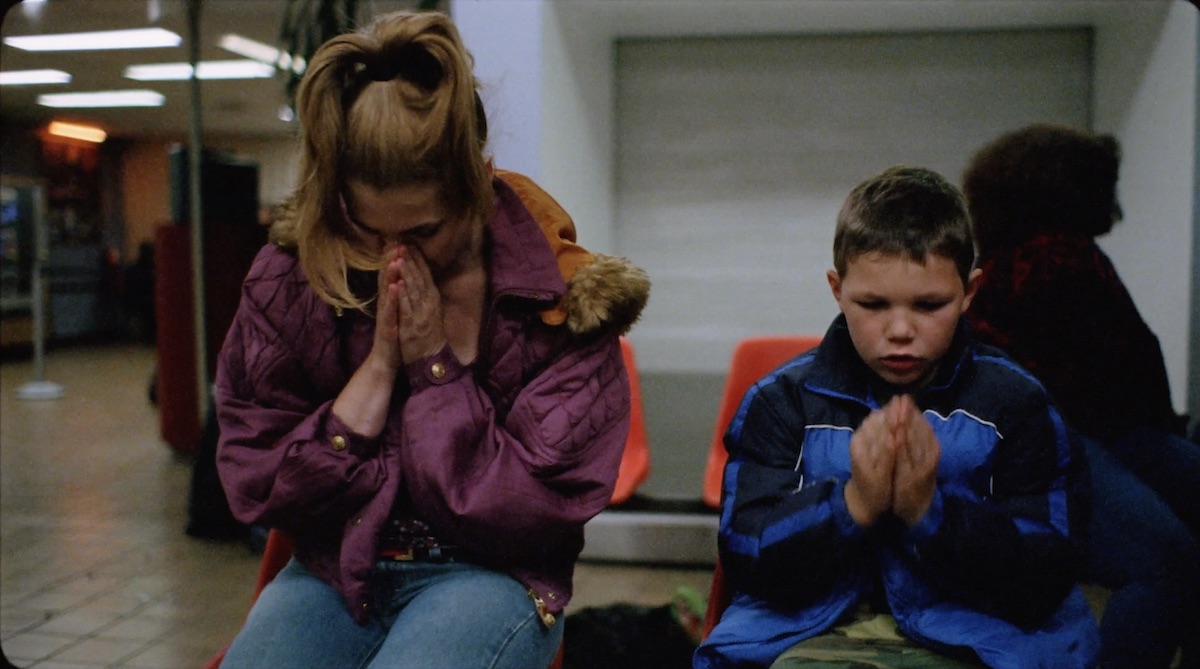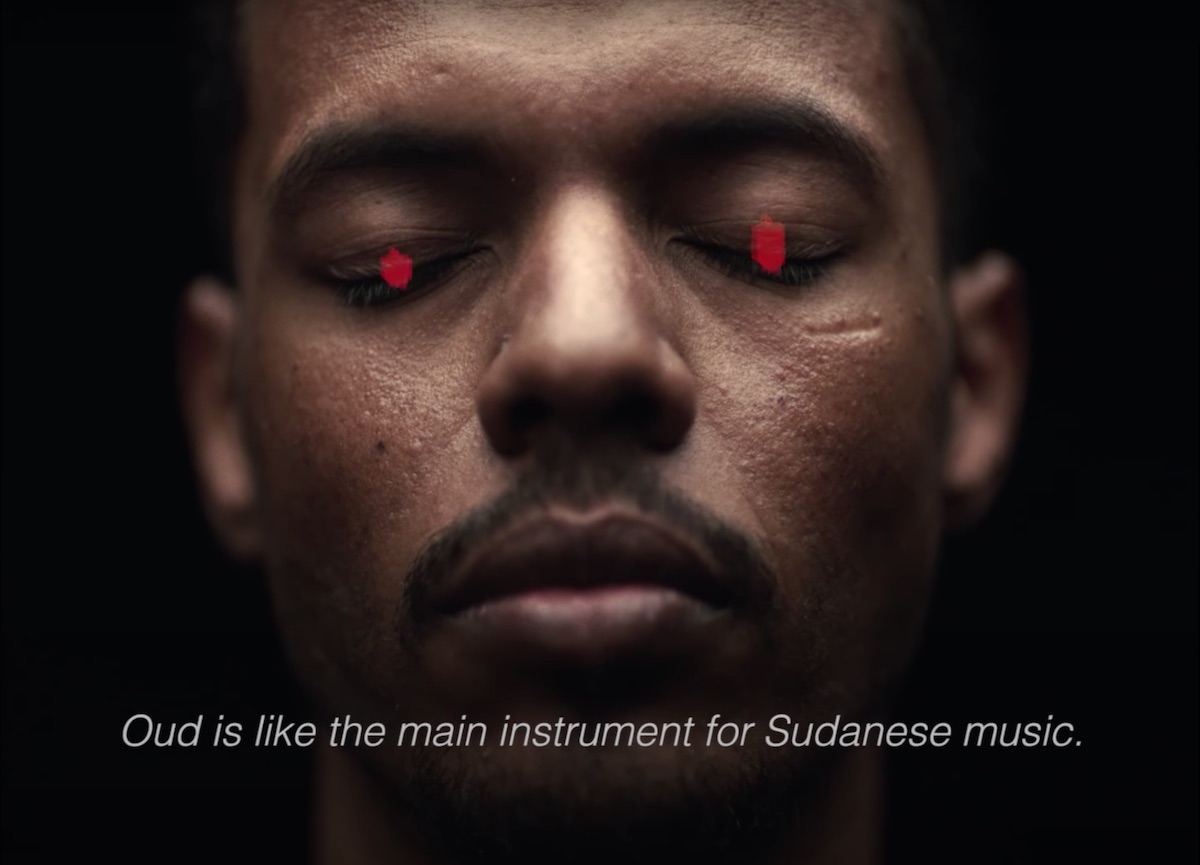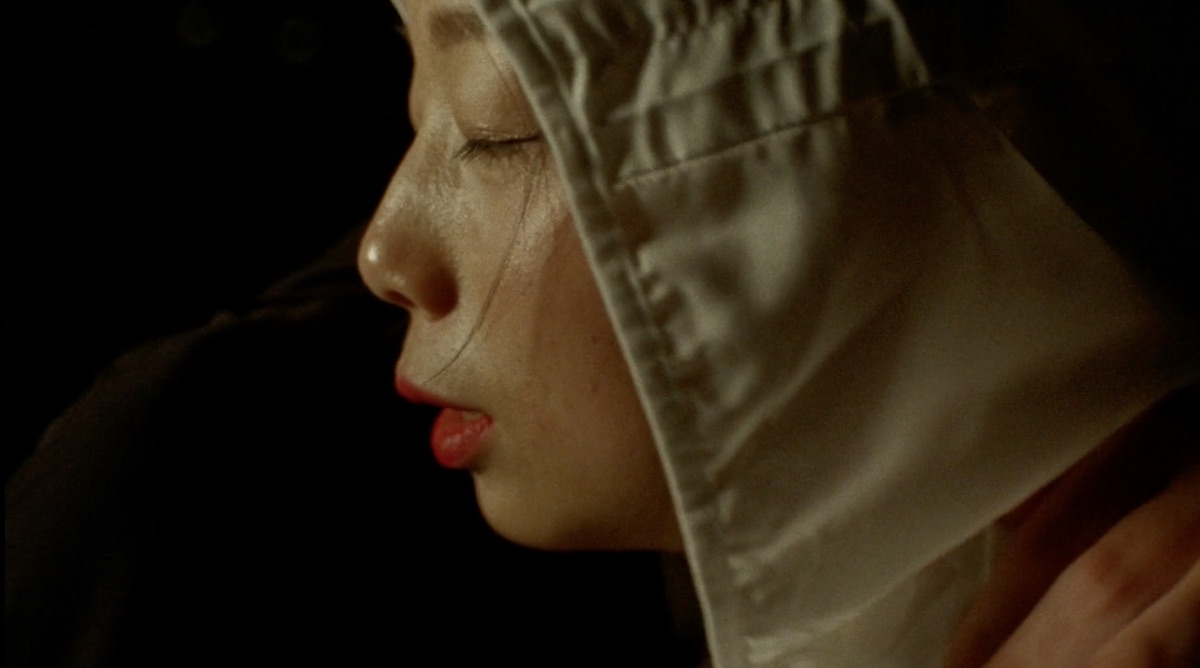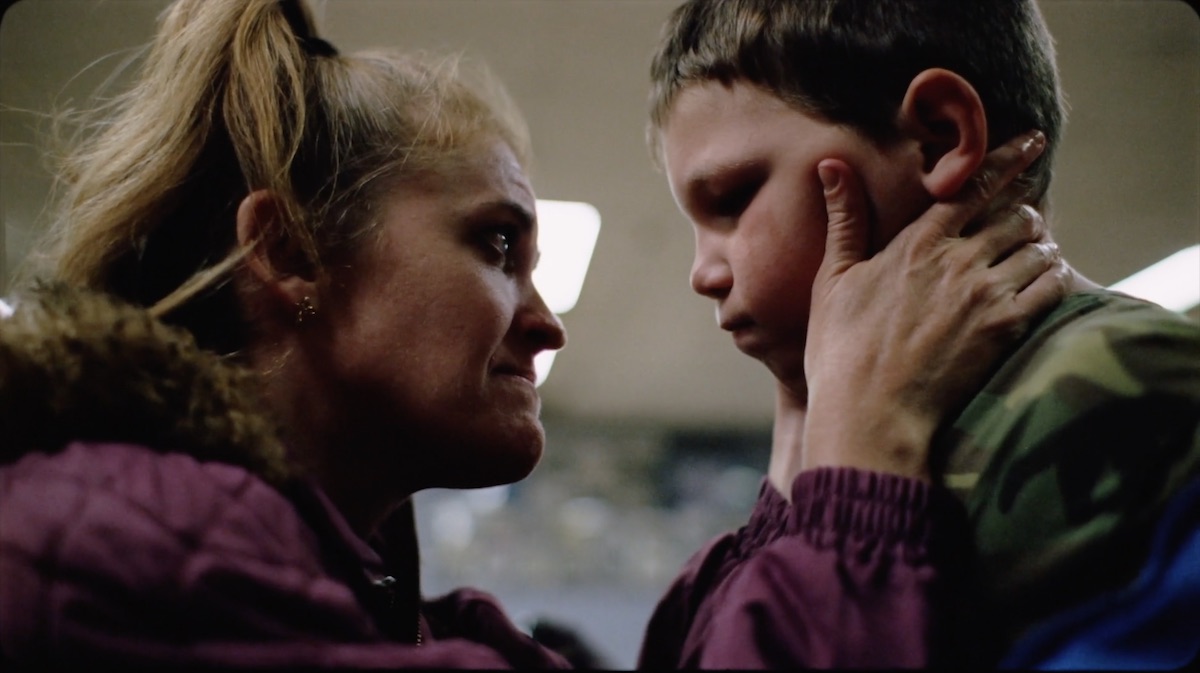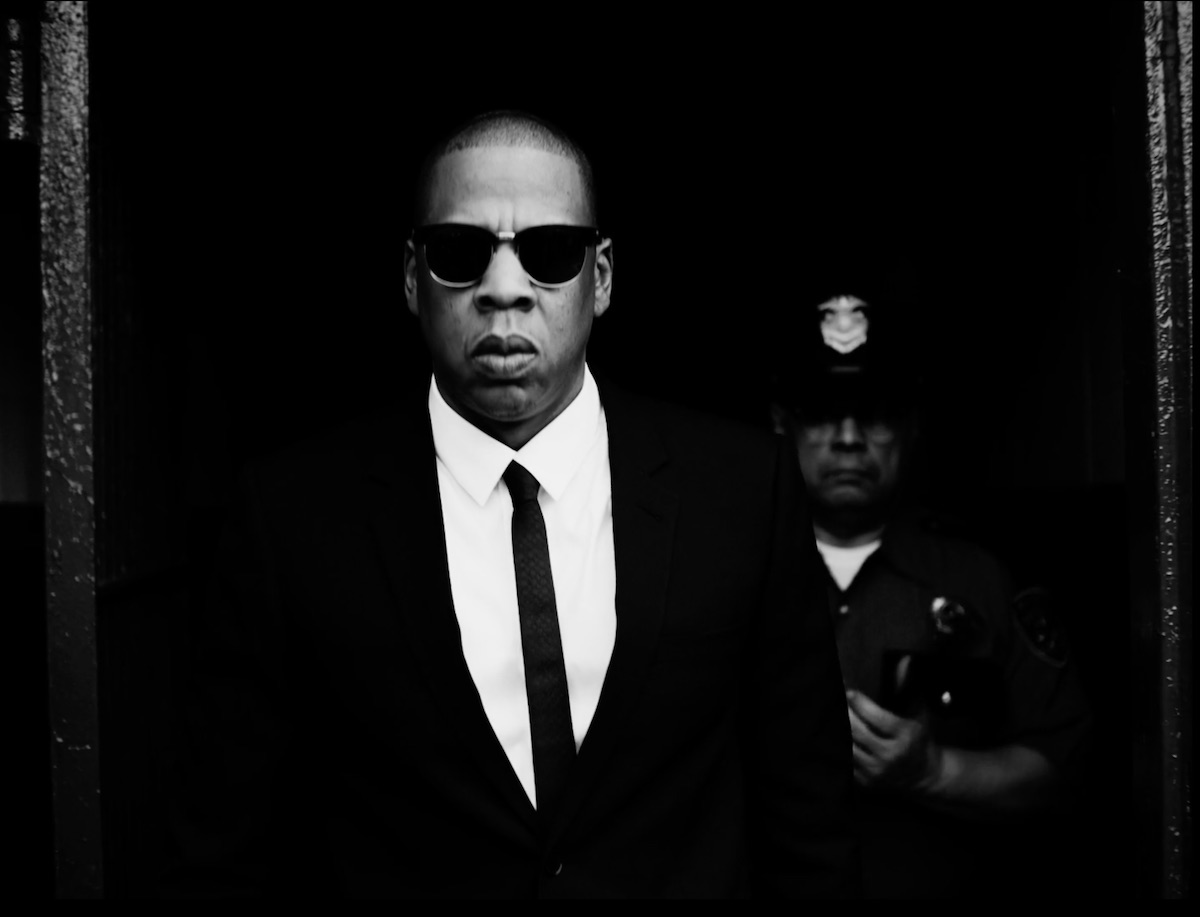Run/On, short film: Erin Markey and Luke Visagie
How much has your background as the son of a writer and documentarian shaped your approach and aesthetic?
Immensely. My childhood was split between the floors of a radio station with my father and a desk at a small Vermont magazine where my mother was an editor. In their hours off, we’d all come together in the attic of our colonial house and pour through 1000s of old VHSs ripped off of late-night TV. For years I thought the glitches of the old commercials that’d interrupt the movies were intentional – and maybe that’s why I’ve always loved static.
That was really the shaping of my taste though – watching my dad conduct interviews with a wide array of subjects (and I mean wide – from mouth-foaming anti-abortion protestors, to circus clowns, to Tibetan monks); studying my mother as she’d craft language and tell stories; and then fusing that all together in our homemade church to cinephilia.
Their respective techniques are the two pallets that I continue to pull from. They’re the duality in my work: the split between documentary and fiction. I always find myself attempting to reconcile the two – pulling documentary closer to the cinematic space, and pushing my narrative work to embody the ethic and technique of non-fiction filmmaking. Suspension of disbelief only really works for me when that line is blurred, when spectacle hypnotises while authenticity grounds you.
Spotify, I’m With The Banned
Your journey as a director is an interesting one – starting off as a cinematographer for your dad’s human rights documentaries, and then moving into music videos for the likes of Alicia Keys, Jay-Z and The Decemberists, back to documentary, into branded content, and now a short film. Have you succeeded in “working to bridge your own opposites”, or is it an ongoing journey? Is there any particular medium you’re drawn to, or do you enjoy the variety?
I always say that my dad had the most humane possible mid-life crisis: instead of buying a sports car, he changed careers and started making documentaries. I was already in film school at the time (which I hated), so when I graduated I was the closest person he could exploit for free labour (I kid). We ended up travelling around the world together working as a team.
Much of my early work came about like this – I really let myself be blown whichever way the wind took me. For instance, my entrance into the world of hip hop was equally accidental. A friend working at a record label said I was the last person he’d ever expect to make hip hop videos. He practically put me up to it as a joke, but somehow it stuck! But I think because I came to these odd corners of the industry with a cinephilic brain and an open heart and mind, I was able explore them with fresh eyes, and absorb my favorite elements of each form without getting stuck in one place.
When I was in my 20s, I saw this path as very scattershot and yearned for a greater sense of continuity. Now I see it with a more Taoist sensibility – I was going with the grain of the wood. When I look at my work now, though, I do see a continuity: I had a real desire to chase authenticity regardless of the form it took. I also think the future of media is and should be more fluid and formless. Advertising doesn’t want to be advertising anymore. Online content wants to be cinematic. Films want to grab people with an undeniable truth just like documentary. It’s all blending, for better or worse.
adidas, Recode Running
Run/On marks a change of direction for you – had you wanted to make a narrative short for some time? You ended up funding it yourself, did it take a long time to get off the ground?
My mother basically breast-fed me while watching The Wild Bunch, so making movies is really all I’ve ever wanted to do. That said, when you become a commercial director the easiest thing in the world is to make nothing other than commercials ever again. It’s cushy – and there’s nothing wrong with that path for some people. You get the opportunity to play with endless toys and to explore style and content in short form ad infinitum. But however you spin it, the work is inevitably subservient to commerce (which is fair: it’s what you sign up for). I’d done a lot of creative striving, but it had been a long time since I’d done so totally unbridled.
Another way of putting it is that my means were serving my means and not my ends, and I needed to shift that. I’d been reading an article about John Cassavetes’ house. Apparently he had something like a $70,000 USD mortgage, and by the time he died, he still hadn’t paid it off because he was always reinvesting his own money into his movies. Some people may see that as a cautionary tale, but I read that and lit up. His ghost must’ve possessed me because a few weeks later I took most of the money I’d earned from a few commercials and put it into the film.
Shooting on 35mm film, with a handheld camera and a one-shot approach gives the film a really raw, authentic feel. Why did you opt for this approach – had you always envisaged shooting in this way or did you play around with different techniques?
There’s a quote from the notes at the beginning of Sam Shepard’s Fool For Love that I really love. He said the play should be performed, “relentlessly, without a break”. Something about this resonated for me in terms of telling this specific story – both the inescapability and the inherent tension in a continuous present moment – but I wanted to capture this in a way that was highly cinematic rather than theatrical, and deeply grounded in the wide-eyed insecurity of the child at its centre, rather than from an omniscient perspective.
The film’s language was like the language of memory: halfway between raw experience and dream. Adam (the DP) and I settled pretty early on this technique and then just honed it in rehearsals intuitively. I remember frequently saying “the camera should feel drunk”, and though that might describe the mother’s character more than the son, it does speak to the sort of wandering eye and lucidity we were pushing for. The film is also all about cycles and family patterns trying to be broken – karmic loops passed down through generations – and so I wanted the visuals to mirror this: the visuals creating a continuous inescapable moment that Luke eventually breaks out of at about the same time that the first cut appears in the film.
The opening scene, with Luke balancing the fidget spinner on his head, is mesmerising, as is the end scene with the electrified lines on Luke’s hand – how was the effect created?
Interestingly enough, the moment with the fidget spinner on Luke’s forehead was improvised. Originally he was just supposed to be holding it, but in a moment between takes, I caught him doing an odd sing-song while balancing it on his head. I always look for unexpected behavioral details like that. Aside from being such a captivating image, it also seemed to speak subtly to the cyclical nature of the film and ended up prompting much of the conversation around titles with designer Joe Ridout of Ana Projects (a regular collaborator and amazing animator). We both honed in on something that May says in the film: that the lifeline on Luke’s palm is so long it just jumps right off his hand. Joe ended up scratching directly on the celluloid, like a Brackhage version of that palm-line come to life, with the idea that the line leads us into the moment of the film and draws it to a close at the end. The film is just one point along Luke’s winding lifeline.
Run/On: Erin Markey and Luke Visagie
The performances from Luke Visagie, who plays Luke, and Erin Markey, his mother, are compelling, particularly Luke, who manages to convey a raft of emotions without ever uttering a word. How did you approach casting for the characters?
I actually met Luke in a Thai restaurant in rural upstate New York. I was sitting there with my girlfriend and her mother, saying how much I’d love to cast a total unknown for the role, when all of a sudden Luke and his family walked in. It sounds unreal, but it’s true. My girlfriend can vouch I have no shame about street-casting people, so I just leaned over my bowl of curry and asked the awkward question. Luckily his parents were amazing and understanding and Luke, though immensely shy that first day, turned out to have a deep well of intelligence and sensitivity on top of his deeply emotive face.
All that was a total gamble though. Luke had never acted before and barely even watched movies. I always felt like he’d need a strong, trained actor to play against, almost like an anchor. My thought was that because he had no lines and May had so many, whoever filled her shoes would in a sense end up subtly directing him on screen, with small cues and indicators. So I wanted to find someone I could really trust. When I saw Erin on High Maintenance, I just had a feeling. I cold e-mailed her and we met for coffee. After a few minutes it was pretty clear our instincts aligned. So much of what I do (particularly with casting, but frankly in every stage of the process) is about intuition, and she really seemed to speak that language too.
Run/On’s theme of escape works on different levels: on the face of it, Luke and his mother are running from her abusive partner, but Luke’s also trying to escape from his mum, and both characters also seem like they’re running away from who they are as individuals. What inspired the story and were you drawing on any personal experience? What do you hope viewers take away from it?
I took too many Greyhound buses in my 20s. When you’ve ridden enough, you start to realize a certain commonality shared by all the passengers, myself included: transience. It’s the intergenerational story of my nomadic family.
This came into full relief last year when my step-father died, and I found myself living under the same roof as my mother for the first time in many years. I saw her wrestling with a familiar question: Can we start over? Are we trapped by the story written in the very lines on our palms? Or can we shift this inherited narrative?
Coming from a family peppered with a history of alcoholism and mental illness, these have always been fundamental questions for me. Like Luke, the kid at the centre of the film, it was clear to me in that moment that my mother and I both yearned to break these patterns and both felt equally powerless. There’s a bond in that realisation but also an independence. The film is about the painful catharsis of breaking free: of stepping onto your own path to break out of a karmic loop, hence the film’s visual structure as a broken circle. I wrote the film pretty quickly during that time with my mom.
DJ Khaled feat Jay Z, I Got the Keys
A lot of your work feels highly experimental and you’ve said you feel ‘alienated’ by clean images, preferring a scrappier approach. How do you reconcile that aesthetic with uber-slick productions such as your video for DJ Khaled/Jay Z I Got the Keys?
Every project demands its own unique language. If it’s authentic, the process of finding that language is always going to involve experimentation. I try to get to know my work in the same way I get to know people. I don’t approach it with a singular calculated method. I listen and treat each project with an individuality and respect and I try to be as humble about it as possible. If you listen, ideas speak their truth to you. Some demand that the visuals elevate their core. Others require that the visuals emphasise a more humble quality. In that sense it’s less that I’m put off unequivocally by “clean images” and more that I think aesthetic should be purposeful.
You’ve also had success with two branded content series, I’m With the Banned, for Spotify, and Recode Running for adidas. What appealed to you about the briefs and how much freedom were you given in each case to explore the stories?
In each, I deeply connected with the people whose stories we were telling. But I also saw them as fertile ground for experimentation and improvisation. I’m always looking for that and it’s incredibly rare, largely because, at least in the commercial space, working relationships are like arranged marriages. Sometimes you wind up with partners you love and other times not so much. As much as there’s a cult around directors, in the world of branded content and advertising, we’re deeply dependent on our collaborators. My best work has been the product of agencies and clients that have liberated me and allowed the entire process to be a space of play. That’s how the best work emerges – when it’s not work.
How have you been spending your time in lockdown?
My girlfriend’s mother lives in upstate New York, so we joined quarantine bubbles pretty early on. I’ve also been filming a documentary in midst of the protest movement in Atlanta, Georgia, so my time’s been a bit schizophrenic going back and forth between two such different worlds – especially with two-weeks of quarantine in between my filming life and my farm life. When I do emerge from that self-isolation, I’ve been lucky enough to spend most of my time going on long drives in the woods, playing backgammon with my girlfriend, fending off my dogs from a wild groundhog that lives under the barn, and raising six new silkie chickens named Cowgirl, Agatha, Doc, Eggy, Charlotte, and Tuba. Given the horror show the world is right now, I feel pretty blessed.
Interview by Selena Schleh
Daniel Kaufman
